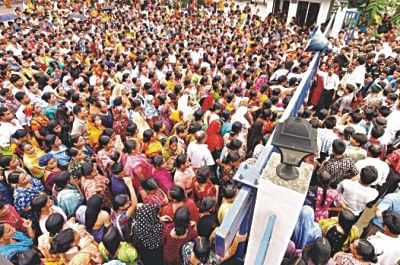Integrating population into development planning

Population and development are interlinked.Photo: STAR
IN the integration of population and development in the formulation of plans and policies, population is generally considered as more of an exogenous variable than as a factor that can be influenced by socio-economic development. It is suggested that the neglect of the population-planning concept in the process of socio-economic planning has led to its neglect at the operational level.
We observe that the first step in the integration of population and development variables is the recognition by planners that rapid population growth is a development problem. Once that is recognised, a variety of public policies are available to reduce population growth. These includes, in addition to family planning services, the provision of social security for the elderly, reducing infant mortality, and compensating who are willing to limit family size.
The scope for integrating demographic variables into planning, a variety of demographic projections is needed, including total population, the agricultural population, the school-age population and the elderly. It also requires women's status in society and the effectiveness of alternative programmes for improving that status.
Others needed areas include strategies for achieving an equitable distribution of resources and ways of dealing with the rapid growth of population in urban areas. The integration of population and development at the operational level requires identification of sectors and core programmes of sectors to incorporate population reduction objectives.
The crucial factors for the successful implementation of a population and development planning project are an appreciation by and sustained support of policymakers and planners for utilising population variables to influence sectoral policies and programmes and the creation of a group of scientifically oriented, professionally qualified senior and mid-level demographers having a broad understanding of the social sciences and the planning process.
In the case of Bangladesh, it is observed that familiarity with either population or development dynamics does not necessarily mean that planners are familiar with the process of integration. The important dimension in integrated planning is the understanding of the interaction between population and development factors.
Moreover, while commitment to integration at the top planning level is a must, it is equally important to generate a similar commitment at the local or lower planning levels. In generating such a commitment, it is suggested that emphasis should be placed on the role of integration in improving planning.
Population measures and programmes should be integrated in comprehensive social and economic plans and programmes, and this integration should be reflected in the goals, instrumentalities and organisations for planning within the country. An integrated approach should be evolved and followed in regard to population and related programs of economic and social development.
The basis for these assumptions is the recognition that population and development are inter-related, population variables affect, and are affected by, socio-economic development variables, and population goals and policies are integral aspects of social and economic development aimed at improving levels of living and the quality of life of a country's population.
Integration involves considering, and taking into account in the planning process, population factors as they significantly influence or are influenced by other variables relevant to development plans.
The objectives of integration are two-fold: (a) to improve the general quality of development planning; and (b) to promote awareness among both planners and policymakers about the need to adopt population policies consistent with development objectives.
Strategies are needed to deal with problems of data analysis and synthesis. Perhaps most importantly there is a need for new organisational structure to ensure the integration of population planning in the development process. A unit dealing with population aspects should be created and placed at a high level of national administrative structure, and should be staffed with qualified persons from the relevant disciplines.
In Bangladesh, the necessary technical competence is likely to be lacking, responsibility may be diffused and the incorporation of demographic factors into planning may result in little more than general statements in the planning document. Population policy and development planning units are, therefore, required to be advocates of a particular and novel perspective on national development planning, but cannot exercise the traditionally most effective bureaucratic lever -- access to or control over budgetary resources.
The integration of population and development planning simply means the explicit consideration of socio-economic and demographic inter-relationship in the formulation of development policies and programmes aimed at achieving the country's development objectives. The need for integration is based on the recognition that demographic variables influence development variables and are also influenced by them, and that demographic policies are integral parts of the social and economic development policies aimed to improve levels of living and raise the quality of life.

 For all latest news, follow The Daily Star's Google News channel.
For all latest news, follow The Daily Star's Google News channel. 



Comments